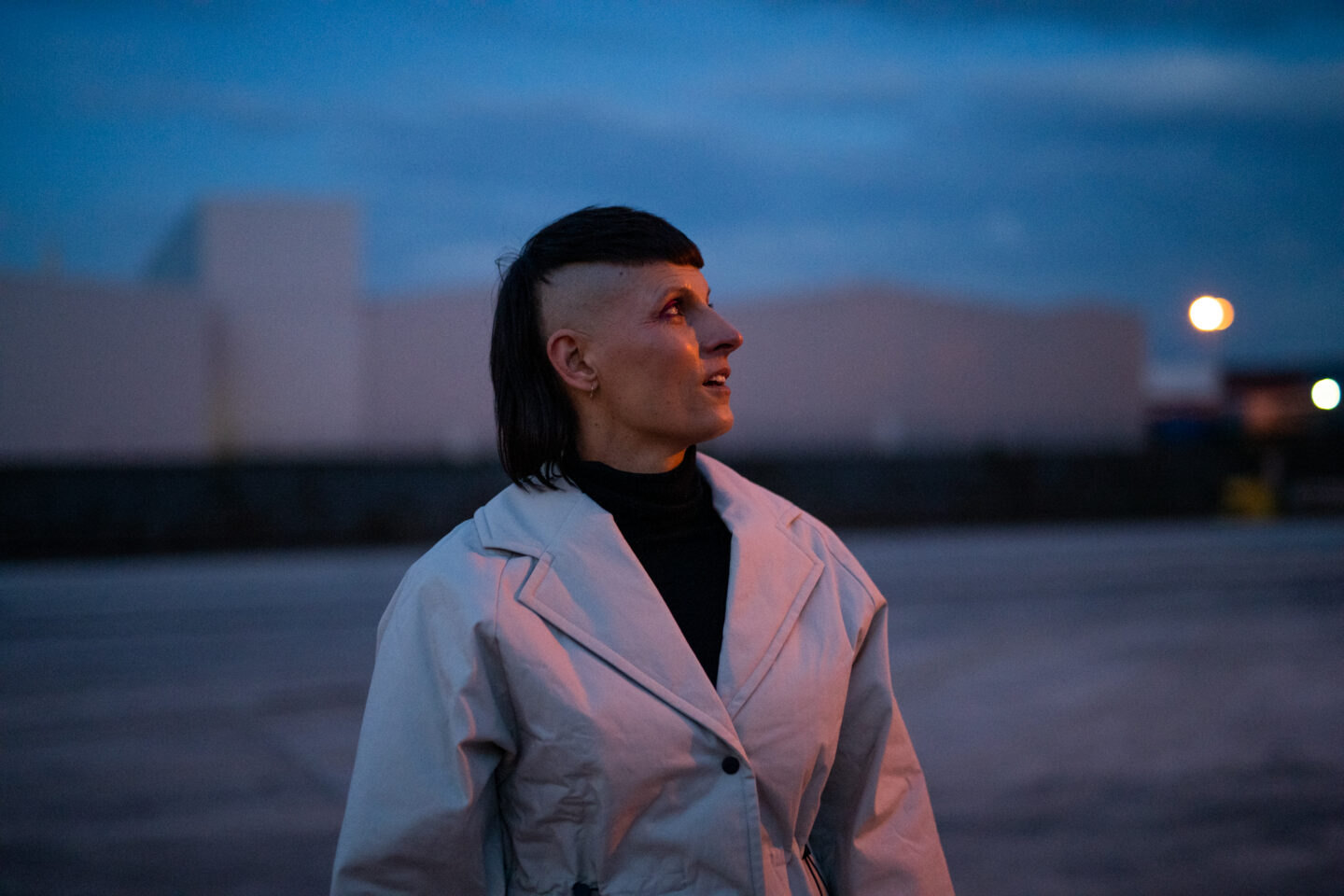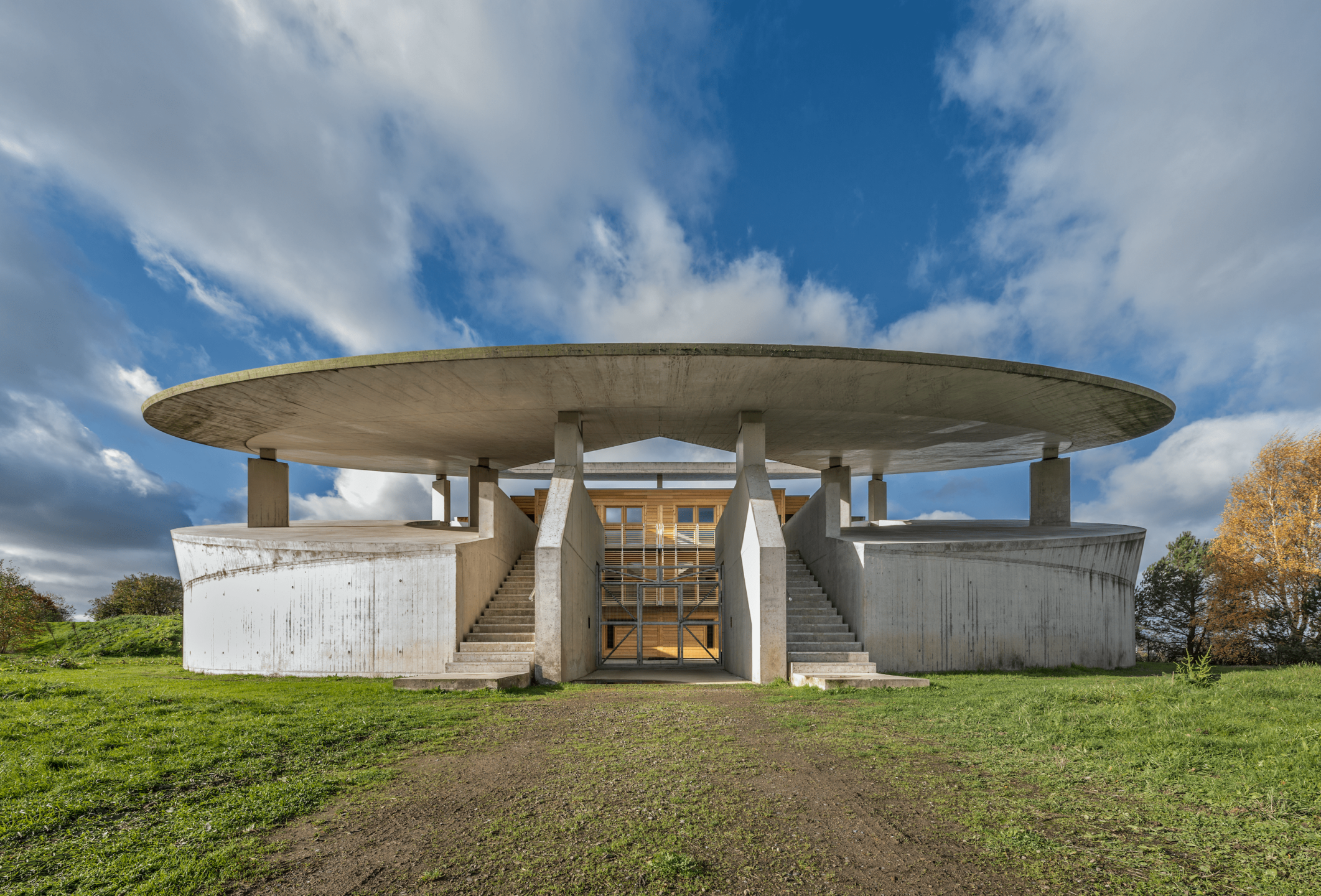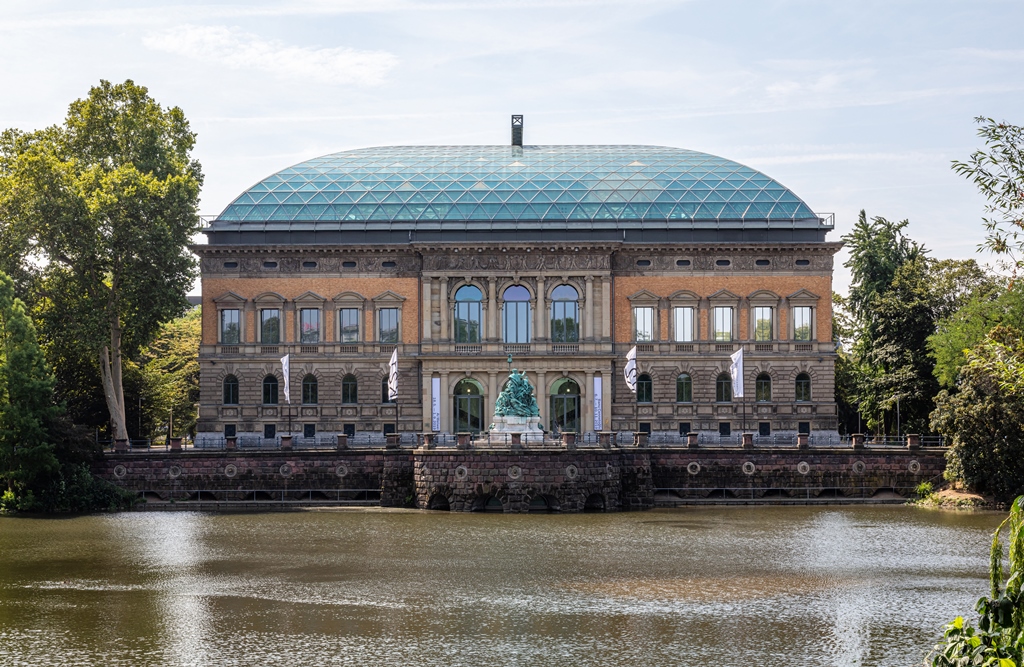Swantje Lichtenstein on the Artistic Work of Language


As part of our new series, Düsseldorf Talks, we talk to people from the arts and cultural scene who have a personal connection to Düsseldorf about their ties to the city, and together we take a look at inspiring, beloved, and frequently visited places in Düsseldorf.
Words: Annalena Roters and Chris Erik Thomas.
Swantje Lichtenstein cannot be tied down to a single practice. After a childhood spent in Tübingen, she jumped around the globe, practicing her craft as a poet, sound artist, performer, and coach in far-flung international locales. As a scholar, she completed her studies in German, philosophy, and sociology before receiving a doctorate in recent German poetry in Cologne. As a lecturer and professor, she has taught at various universities around the world, including the University of Applied Arts Vienna, the Academy of Media Arts Cologne, and the Universidad del Norte in Barranquilla, Colombia.
Since 2007, she has worked as a professor of Text & Aesthetic Practice at the Hochschule Düsseldorf — settling into the city and establishing deep roots within the art community. Beyond her outstanding career in academia, she’s also established herself in the art scene through a broad array of works, including poetry, essays, theory, translations, and sound works. She is particularly interested in transtextual and performative extensions of language, sound, and theory, as well as artistic explorations of electroacoustic and conceptual modes of recording from a transmedial and feminist perspective. Alongside the presentation of her work at international festivals, including the Sound Eye Festival in Cork and the International Poetry Festival in Bucharest and Istanbul, she is also co-founder of the cOsmOsmOse festival for performance poetry and verbophony.
For Düsseldorf Talks, we caught up with Lichtenstein to dive into parallels between the visual arts and the literary scenes, her favorite ramen spots, and more. Read through and take a look at all of our Talks in the digital magazine.

Raketenstation. Haus für Musiker: © Bildarchiv Foto Marburg / Foto: Tomas Riehle © Raimund Abraham
You are an artist, author, and professor of text and aesthetic practice at the Hochschule Düsseldorf and live here in the city. What makes Düsseldorf special for you?
Düsseldorf, with its Asian and international community, its geographical location close to Belgium and the Netherlands, and between the Ruhrpott and Cologne, is a mediator that brings people and worlds together. A city of fashion, music, and art, with quite a diverse history; a zoo without animals; a meandering Rhine; architecture that doesn’t really work together but nonetheless has many places to enjoy; [and] lakes and forests. It’s definitely more interesting than its reputation.
What kind of city is Düsseldorf when viewed through the lens of literature?
I don’t know exactly how to answer that [through] the “lens of literature,” perhaps because I don’t know how to put it on or take it off. I am very myopic and wish literature as a whole in Germany was more open, [and also wish there was more] acceptance of writing as an artistic practice that ventures a little outside the educational, entertainment, and knowledgeable corners. Since Heinrich Heine’s time, however, there have been (and still are) many writers and many institutions dedicated to literature, bookstores, publishing houses, and artistic projects.
In recent history, one can observe connections and synergies between the visual arts and the music scene in Düsseldorf. For example, with the action artists of the 1960s, but also in the heyday of punk in the 70s and 80s. Are there such connections to the literary scene as well?
I belong more to those who understand writing as an artistic practice and this has a long tradition in art, music, and literature — especially in the times that saw an overall change in society, in institutions, and in art as a social or extended art practice. In legendary places like Daniel Spoerri’s Restaurant am Burgplatz, the club Creamcheese, or the Ratinger Hof, artists met and worked with all kinds of materials, including language, sound, and literature.
The poet Thomas Kling, who unfortunately died much too early, is a good example of this. He regularly performed with various musicians at the Ratinger Hof and worked and lived together with his wife, the artist Ute Langanky, at the Raketenstation Hombroich. This historiography, unfortunately, still focuses on a very male and European perspective on art and literature, but the divisions between the arts were definitely less strong in this period than they are today.

Art Collection North Rhine-Westphalia (K21). Photo: Sebastian Drüen.
What role does contemporary visual art play in your work?
I understand my work as an artistic practice, not only with my sound art, performance, and video works, but also with “language art” and the “making” ( or “poiesis”) with the material language. I have dedicated myself to this topic for a very long time and I consider working with language a transmedial, artistic work that also exists in space, in the body, as a written image and concept.
What are your favorite places for literature, art, or music in Düsseldorf?
K20/K21, Kunsthalle with the Kunstverein, Julia-Stoschek-Collection, Museumsinsel/ Raketenstation Hombroich, fft-Theater, Stadtbibliothek, Filmhaus, and Tonhalle, but also small event spaces, off-spaces, and galleries. I’m not good with names, but there are good websites collecting this [like The Dorf].
I try to take more breaks, listen to experimental and new music, and eat a lot of ramen.
After visiting a museum or attending a concert, where do you prefer to go for a coffee, have something to eat, or dance?
The best [thing to do] is to get ramen on Immermannstraße. Otherwise, I tend to just go around the corner.
Which place in Düsseldorf do you particularly recommend to visitors of the city and our readers? What makes this place special?
The botanical garden with its great dome, the organ in the Neanderkirche in the historical center, Aaper forest, and Unterbacher lake. I like to be outside.
What are your future plans and projects this year?
I am working on the production of audio works on tape cassettes and vinyl records, [and] sound installations and performances that explore vulnerability, connection, and healing. [Also] Artificial Intelligence translations of a handbook by English philosopher Sara Ahmed on feminist buzzkill, [and] an artistic research project on community arts that looks at challenging the classic white genius approach to art and advocating for a more inclusive, collective approach to the production of the arts.
[I am also] always working on poems, essays, workshops, and seminars. Otherwise, I try to take more breaks, listen to experimental and new music, and eat a lot of ramen.
Chris Erik Thomas is the Digital Editor of Art Düsseldorf. They work as a freelance writer and editor in Berlin and focus primarily on culture, art, and media. Their work can also be seen in Highsnobiety, The Face Magazine, and other publications.